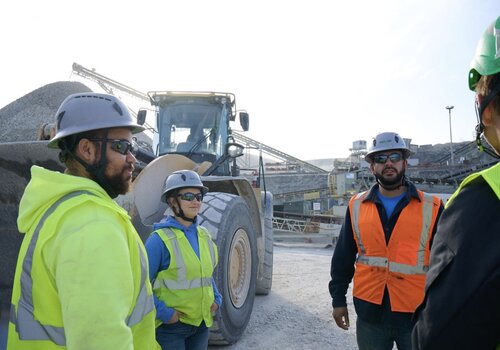Large construction projects come with large price tags that seem to increase as the project progresses. Cutting unnecessary jobsite costs and taking advantage of the below time-saving tips will help you boost your profit.
Rework, manual labor, and using printed documents, and supplies are the four biggest unnecessary expenses on construction sites.
1. Avoid rework
Rework happens when something is constructed incorrectly or in the wrong place, so crews must complete the tasks again to complete them correctly. Rework adds time to your schedule, because now crews have to do at least double the work—and maybe some demolition too—on one part of the project.
“We QC/QA work is done correctly from the beginning, says Mark Glass, Vice President - Northwest, Ryan Companies.
“Rework can be a huge issue when it comes to cost, but that is significantly decreased when you have qualified people,” says Marc Vicano, Vice President, Vicano Construction Ltd. “We’re in the midst of a labor shortage, so the price of labor is high, but we have found the best way to reduce rework and save on labor costs is to hire qualified people. We pay more on an hourly basis, but it is worth it to get superior production rates. Using qualified people also makes predicting time to complete work becomes more accurate, because we can depend on them to provide regular production rates.”
2. Include automation
So many processes required to complete a construction project can now easily be automated. The ability to easily automate makes performing some manual tasks an unnecessary cost.
For example, automation can eliminate double data entry. When creating a takeoff, you must calculate and key in hundreds of quantities—how much concrete, wood, steel, nails, windows, etc. When companies prepare their bid, they can either manually enter all that information into their bid or, if they use software for their takeoff, they can export the data to their bidding software, which takes much less time than entering the totals manually a second time.
Construction management software provides a host of opportunities for automation from updating punch lists, to emailing key people when there’s a change order to updating financial records when there are changes to a construction project’s costs.
All of these forms of automation save time, which translates into cost savings. Plus, data exported from one software to another will likely be more accurate than data entered manually, and inaccurate data can negatively affect finances, purchasing, and schedules.
“Construction management software apps can help you save money and time,” says Vicano. “With proper software and communication, which helps speed things along. It keeps key project data organized and decreases time spent on administrative tasks. It’s also useful at helping you predict costs, which can help you stay on budget.”
3. Cut out paper
Construction companies that use paper blueprints and plans are paying a lot for unnecessary costs. It’s not that paper and ink are so expensive, it's that paper documentation slows down the construction process so much.
One morning a construction worker finds an issue on a construction site that conflicts with the blueprints, they must advise their supervisor, who tells the project manager. Perhaps they even drew a picture of the problem, and that document and message have to be delivered to the architect, so the architect can make changes to the blueprints. The architect receives the picture and message and devises a solution. Since it’s the end of the day, the architect waits until the following day to print the blueprint. And then someone has to pick up the blueprint from the architect’s office and deliver it to the construction site.
Sometimes, two whole days can pass by before the field crew gets a whole new direction. Meanwhile, that part of the project is in limbo and delayed.
A digital solution would allow the field worker to take a picture of the issue, and email it to the appropriate people, so the architect would be informed right away. Then the architect can devise a solution and publish it to the construction software, so the field crew can get back to work by lunch.
Using paper also contributes to greater rework, because people believe they have the latest copy of a plan, work it, and then find out there’s a newer plan that negates the work they completed.
4. Save on supplies
Building supplies are a large component of project costs and a great opportunity to save money.
“Since the pandemic, the cost of construction has increased dramatically,” says Vicano. “It worked its way across the supply chain affecting both global and local markets. Going into 2023, the increase is tapering off, but the price of supplies won’t remain the same from the time the bid is submitted to the time you need to buy the supplies. Suppliers just can’t hold the price of their products that long.”
“We’re trying to forecast the end of inflation,” says Glass. “In Seattle, we’ve seen inflation of 14 percent in the last calendar year. We’re also seeing some slowing in the escalation—five-to-six percent when we’re used to seeing an annual rise of just four percent. Pricing is softening and we expect stabilization to occur in the next five to six quarters.”
Contractors are reacting to higher prices by changing construction processes and being flexible when it comes to selecting building materials.
“A lot of our subcontractors are using prefabrication for mechanical, electrical, and plumbing in order to cut costs,” says Glass. “A lot of our building materials arrive on site already cut to fit, and this decreases time to complete tasks and reduces waste.”
“When it comes to supplies, be flexible with designs so you can change out building materials if costs now favor the use of a different building material,” says Vicano. “For example, if the design on a box-shaped industrial building calls for a TPO roof but a PVC roof proves itself to be the cheaper option when it comes time to install the roof, you can explore that option and shift at the 11th hour.”












